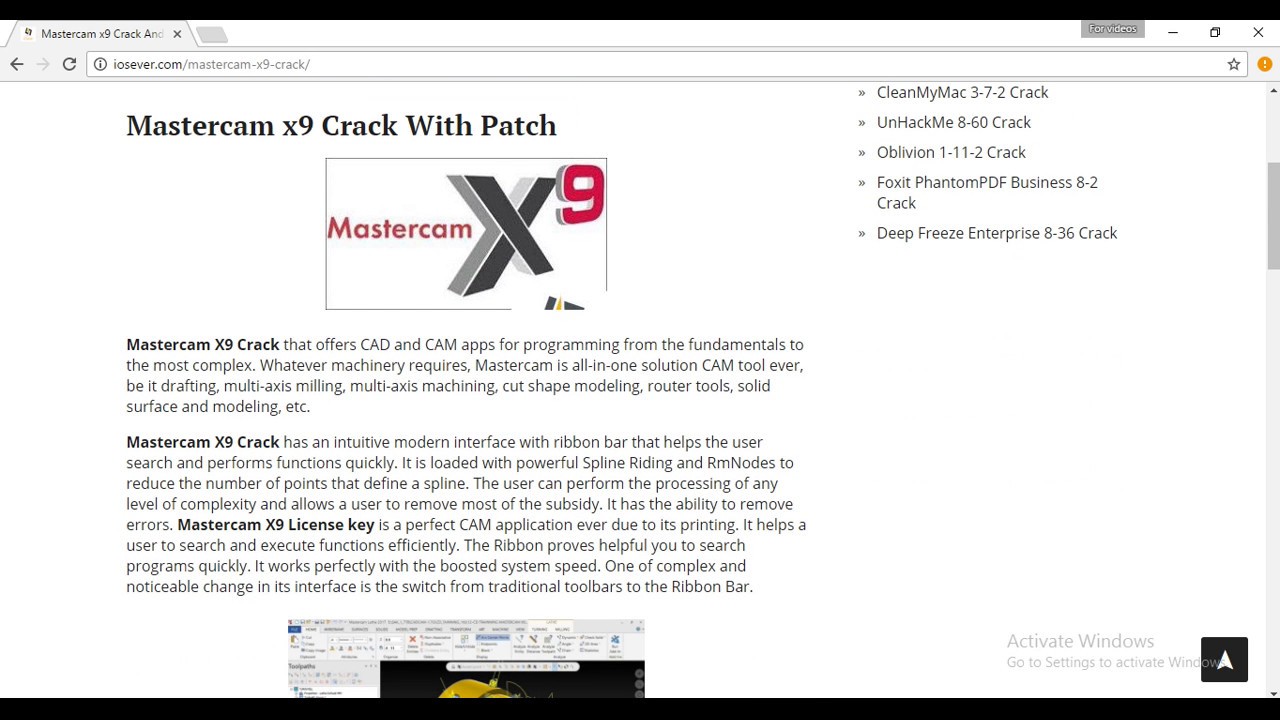
For a Boolean Remove or Common regions operation, you can choose whether or not to maintain associativity. You can add solids together, remove solids from one another, and find the common region defined by overlapping solids. When you change an operation's geometry or solid parameters, use the Solid Manager to regenerate the operation.īoolean functions let you construct a solid using combinations of two or more existing solids. If you try to delete geometry used in a solid, Mastercam will warn you.Īssociativity is what lets Mastercam regenerate a solid when the geometry changes without you having to recreate it from the beginning. This association can be broken only by deleting the solid. When you create a solid, Mastercam links it to the geometry. SuppressĪssociativity in Mastercam refers to the relationship between geometry and the solids that are created from it. Model will not have problems when accessing it in the future. The final model should be saved without any suppressions or roll back points to ensure the O Model checking tools- are temporary tools used to check the validity of a model. You can dock, undock, re-size, and close the Operations Manager.


While you are working in the Solids Manager, you can customize the display of background colors, line colors, and font styles and colors. You cannot use Mastercams Undo function to reverse a change you make from the history tree. Solids that you import from other applications have no operation history and are referred to as "bricks." The history list reflects only the operations that you perform on the imported solid once it is in Mastercam. However, Mastercam Solids must be installed to modify or create additional solids, with the exception of primitives. If you do not have Mastercam Solids installed, you can still import and machine a solid.
Mastercam x5 surface how to#
The following paragraphs describe how to use the Solids Manager and some of the operations you can perform. To access these functions, right-click on a solid or operation in the list. In addition to listing the operations that define a solid, the Solids Manager gives you options for managing and editing solids and solid operations. To access the Solids Manager, choose the Solids tab in the Operations Manager pane, on the left side of the graphics window. You can also expand solid operations to access their parameters and underlying geometry. You can expand the tree structure of a solid to view the history of the solid, which is a list of the operations that were performed to construct the solid, as well as any toolpaths that were created on the solid. The Solids Manager is located within the Operations Manager next to the Toolpath Manager. Re-position base point Size Expand (additional parameters) Flip direction Sweep Axis of orientation Contextual help Top (Cone), use this option to create a tapered cylinder Rotation (Block) Anchor point (Block) Major radius vs. Primitive shapes o When creating primitives, draw them dynamically on the screen first then use theĭialog window to modify the size, orientation and any additional properties defining the Mastercam automatically performs these actions for you, always maintaining each solid as a single entity. You never have to determine the surfaces that you want to keep or trim when you perform operations on the solid. Handles the complexities of the model behind the scenes.

This characteristic makes solid modeling easy because Mastercam For example, you can add fillets to a solid, then hollow it out, and even combine it with another solidit still remains one entity.īecause a solid is a closed, organized model, Mastercam is able to keep track of the inside and outside of the model for you.
Mastercam x5 surface series#
You work with a solid model as a whole, like molding a piece of clay, rather than building a model from a series of unrelated entities. Unlike wireframe models, which are a collection of curves, and surface models, which are a collection of surfaces, a solid model is a single entity, regardless of its complexity, and may comprise several solid bodies. Solid modeling refers to the process of creating solids. Pre-requisites: Beginning Mastercam class and 3-6 months of prolonged Mastercam use Materials: Folder, course syllabus, surface definitions and drawings Advanced Mastercam training, covering solid, surfaces and surface machining strategies. Remote Machine and CNC education Patrik Warren


 0 kommentar(er)
0 kommentar(er)
